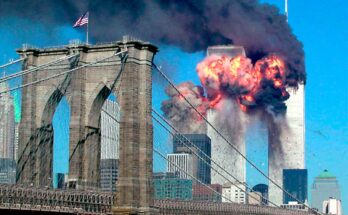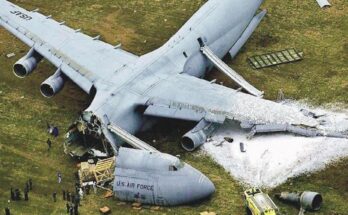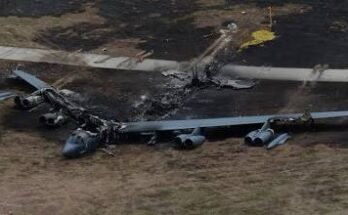
During the aftermath of the reactor core fire, a vast amount of airborne radioactive contamination was released into the open air. The Soviet military responded by deploying a large fleet of Mil Mi-8 helicopters, which were tasked with dropping radiation-absorbing materials—composed of boron carbide, clay, dolomite, lead, and sand—onto the blazing reactor. Over 600 pilots undertook short, 20-minute flights in challenging conditions. Ultimately, more than 1,800 sorties were conducted, with many pilots exposed to extreme levels of radiation, far beyond the maximum readings of their dosimeters.[2]

For nine days, helicopters continued to dump over 5,000 metric tons of absorbent onto the flames. Simultaneously, oil well drilling equipment was utilized to inject liquid nitrogen beneath the reactor, freezing the soil to prevent the core from sinking—a scenario feared to cause a “China syndrome” meltdown—and to stabilize the nuclear plant’s foundation.[2]
On May 4, the fire was officially contained, though by then it had released a radioactive cloud that spread across parts of the USSR and Western Europe, equaling the radioactive output of the initial explosion.[2]

Most of the helicopters involved in the operation became heavily irradiated, leading to their abandonment in massive junkyards, where they now decay in “machine cemeteries” within the 30-kilometer exclusion zone around Chernobyl—enduring like the radioactive isotopes that still linger in the region.[2]
The Crash
On October 2, 1986, Mi-8 helicopter with Cup-2 crews involved in the cleanup efforts crashed into the area near Reactor 4, RBMK-1000 type. The helicopter was flying too close to the reactor to drop sand and boron onto the exposed core, which was still emitting significant radiation. Unfortunately, The sun blinded the eyes of the pilots and the helicopter’s rotor blades struck a crane that had been used in earlier construction work, causing the aircraft to lose control and crash.[1][3]

The accident resulted in the deaths of all four crew members onboard. This crash highlighted the extreme risks faced by the emergency responders who were trying to contain the disaster, often with limited safety protocols and in highly radioactive conditions. The courage of these responders is widely commemorated today, as they faced severe risks to mitigate the environmental and health impacts of the nuclear disaster.[3]


